Mega Ray-cing to the Finish Line! A look at Mega Rayquaza for the Melbourne International
Hello again readers! My name is Jordan Palmer and I am back with another article in the lead up to the Melbourne International. We are less than a week out from the event now, so I will be analysing a deck which I feel could be a strong play going into the event, Mega Rayquaza. There is quite a lot of diversity in how Mega Ray can be played so I will be covering many different builds here today. But first, where does Rayquaza fit into this metagame?
After seeing the results from the Anaheim Regional Championships recently, we can tell that Rayquaza has already started to see success. This shouldn’t be too shocking as its speed and power is unparalleled in this format. It can take advantage of some of the most hyped sun and moon cards which won’t be able to stand up to its aggression. After Anaheim, there are some key reasons why I think Rayquaza may be able to make a strong comeback going into Melbourne. Firstly, Giratina winning the event may scare off some of the Vespiquen/Zoroark, this is typically one of Mega Ray’s most feared matchups, while its true Ray also struggles to take down Giratina there are some strong answers for dealing with this which I will discuss later. Another positive point for Mega Ray is Volcanion’s position. Volcanion performed underwhelmingly in Anaheim which I think will allow for some more creativity in Melbourne, some people may opt to try out their Lurantis GX or Decidueye GX decks due to the lack of Volcanion but then Mega Ray can swoop in and become just as big a threat. And let’s not forget the hype for Mega Mewtwo and Darkrai going into this event, these decks will likely encourage Mega Gardevior to see more play which is a near auto win for Rayquaza. To put it simply, the results from Anaheim seem to make quite a few different decks look better going into Melbourne, which is good news for Rayquaza who has strong matchups against many of these newer decks as well as solid matchups against the high tiered decks.
Of course, Mega Ray also has its fair share of weaknesses, and probably one of the biggest downfalls for this deck is how easy it is to take advantage of these weaknesses. Parallel City is the most obvious counter to this deck and is probably the most popular stadium card in the game. Paired alongside the widely played Garbodor and Mega Ray will struggle to ever recover in time. Silent lab is also a soft counter to Ray but is much less effective. Energy denial can also be problematic, a typical Ray list will play no more than 8-9 energy with about half of them being special energy. Energy discarding attacks are starting to come back into fashion a little bit with cards like Umbreon GX and Lycanroc GX, luckily there is an easy answer to this which I will discuss later.
Mega Ray remains a top deck after Sun and Moon’s release even though the new set has made little impact on how the deck runs. However, there are a few new cards which can help give the deck a small boost in consistency or diversity.
Firstly, we have Oranguru. This card is a very light consistency card which you may think is overkill in a deck already running 3-4 Shaymin EX. Oranguru’s purpose it to help you close out games. A common way to beat Rayquaza is to watch them take a quick lead then N them down to 1-2 cards and Parallel City them down to 3 Bench. In this situation, even if you are lucky enough to draw a Shaymin EX, you may not even be able to play it due to the Parallel City. With Oranguru in play, you can guarantee to draw at least a few extra cards which may be the final piece of the combo you need to close out a game, or even just the next draw supporter.
Its everyone’s favourite splash-able GX, Tauros! Tauros serves a few purposes in this deck but most importantly it acts as a very strong Glaceon EX counter. Some Mega Ray lists may struggle to deal with a Glaceon EX and Oranguru is not a recommended attacker, simply putting a Tauros active with a DCE will likely be enough to break the Crystal Ray lock whether they attack or not. Tauros also acts as a solid attacker under Parallel City, you can apply pressure with it while you try to find your next Sky Field and power up your next Ray. It also applies early pressure against decks like Vespiquen, especially since you have no reason to conserve the GX attack being your only one anyway, but Mega Rayquaza is not a deck known for struggling with early pressure. It does act as a semi Giratina EX counter, if you are being locked by Chaos Wheel, promoting a Tauros GX and attaching a basic energy can be very threatening for them.
While not brand new, these recently released supporters have seen very little play but might be just what Ray needs to stay alive in a format full of Parallel City. Getting hit by a Parallel City multiple times can be a bit too much to deal with even with Super Rod and Dragonite EX, especially with so much ability lock in format. These recovery supporters offer a near unlimited supply of Pokémon, which for a Mega Ray deck means it should never run out of damage. Out of these two, I personally prefer Karen because it also acts as a light counter to Vespiquen. If they don’t play a high count of Klefki then Karen can maybe sway this terrible matchup into your favour if timed correctly. Brock is better if you want to conserve basic energy also, but that is honestly not much of a concern for a Mega Ray deck typically.
Mega Ray being a colourless type, has many options with what it can be paired with or how it can be played. There are 5 different variants I will be discussing here but first I would like to discuss both the Jolteon and Glaceon/Manaphy builds. These two are quite similar, so I will group them in this section. As mentioned before, Mega Ray’s biggest weakness is Garbodor and Parallel City and the deck most well-known for that combination is Yveltal. Adding Jolteon completely changes that matchup into your favour which is a big deal. It also acts as a free retreat bench sitter which can be found with Hoopa. Other matchups Jolteon can help against include Waterbox (Glaceon) and Darkrai. As for the Glaceon build, it has a slightly stronger form of retreat in Manaphy, which instead of having free retreat, can give anything free retreat. Glaceon uses the same concept as Jolteon but it just targets different matchups, Glaceon can instead help you win matchups such as the mirror, Solgaleo/Lurantis or Vespiquen. It’s a meta call for which build you think will be stronger on the day, my main concern with the Manaphy build is that it loses more strength against Garbodor than usual, however it was the build which managed to win one of Australia’s only League Cups this season so it shouldn’t be underestimated. Below is my list for Mega Ray/Jolteon which I recently piloted to first place at a local League Challenge.
| Pokémon (16) | Trainers (36) | Energy (8) |
| 2x Rayquaza EX (Colourless) | 4x Professor Sycamore | 4x Double Colourless Energy |
| 1x Rayquaza EX (Dragon) | 1x N | 4x Lightning Energy |
| 3x M Rayquaza EX | 1x Hex Maniac | |
| 4x Shaymin EX | 1x Lysandre | |
| 2x Hoopa EX | 1x Karen | |
| 2x Jolteon EX | ||
| 1x Dragonite EX | 4x Ultra Ball | |
| 1x Jirachi | 4x VS Seeker | |
| 4x Trainer’s Mail | ||
| 3x Rayquaza Spirit Link | ||
| 3x Mega Turbo | ||
| 2x Acro Bike | ||
| 2x Escape Rope | ||
| 1x Super Rod | ||
| 1x Special Charge | ||
| 4x Sky Field |
This list ended up being a good meta call for the LC I attended, the techs paid off well as I hit 2 Yveltal Garbodor and a Vespiquen after adding Jolteon EX and Karen. For anyone wondering why there is a 2-1 split of the Rayquaza EX it is mainly because the dragon type one is bulkier (10 more HP and less common weakness). The colourless one has better attacks but realistically you never want to attack with either anyway so having the single dragon type can come in handy against lightning decks because you can keep your energy on board safe until you mega evolve. Some cards which really helped in this event include the Acro Bikes which I could fit due to not including Puzzle of Time. The Arco Bikes helped in speeding up the deck as well as being an additional method for discarding energy for Mega Turbo. In any Mega Ray list running Acro Bikes, I would strongly advise playing Special Charge, while this is a good inclusion regardless it is near necessary for the Acro Bike build in case you are forced to ditch DCE’s. Finally, I included the stardust Jirachi. The main purpose of including this is to help beat the Giratina matchup if you can’t power up a Jolteon EX quick enough. This card has use in other matchups as a staller. Any deck playing Special Energy can be slowed down by Stardust while you set up another Ray but even against any deck Jirachi is great to just sacrifice. As the only non-ex in the deck, your opponent gains nothing from KOing it other than putting them on an odd prize trade. Any turn that you aren’t announcing “Emerald Break” you should probably either Sky Return into Jirachi, or just promote it so that your future N’s are more devastating.
The next Mega Ray list I would like to talk about is the recently hyped Mega Ray/Volcanion which got top 16 at the Anaheim Regional Championships. Shout-out to Christopher Kan, Australia’s first World Champion, for coming up with this concept late last year. Unlike the other variants of Mega Rayquaza which try to tech for specific matchups, Volcanion’s only purpose is to increase the consistency of the deck, so this is Mega Ray in its simplest form. Volcanion’s only purpose is to thin the energy out of your hand to trigger Mega Turbos faster. This version of Mega Ray aims to do what Mega Ray is designed to do more consistently than the others, so if you feel you don’t need the extra assistance in beating a specific matchup, this is probably the strongest list to use. Here is my list for Mega Ray/Volcanion.
| Pokémon (16) | Trainers (37) | Energy (7) |
| 2x Rayquaza EX (Colourless) | 4x Professor Sycamore | 3x Fire Energy |
| 1x Rayquaza EX (Dragon) | 1x N | 4x Double Colourless Energy |
| 3x M Rayquaza EX | 1x Skyla | |
| 4x Shaymin EX | 1x Hex Maniac | |
| 2x Hoopa EX | 1x Lysandre | |
| 1x Volcanion EX | ||
| 1x Tauros GX | 4x Ultra Ball | |
| 1x Dragonite EX | 4x VS Seeker | |
| 1x Jirachi | 3x Trainer’s Mail | |
| 4x Puzzle of Time | ||
| 3x Mega Turbo | ||
| 3x Rayquaza Spirit Link | ||
| 2x Float Stone | ||
| 1x Escape Rope | ||
| 1x Super Rod | ||
| 4 Sky Field |
This list uses Puzzle of Time as a core element to the structure of the deck. Puzzle helps chain consistent attacks for an entire game so it combos well with the Volcanion build which helps you attack early more consistently. What might be the most important role of Puzzles is that they help you deal very easily with Parallel City. All you need to do is Puzzle for a Sky Field and a Dragonite EX or an Ultra Ball and your all set. Against Garbodor decks you can also use it to reuse Super Rod multiple times per game to get multiple Pokémon back without using a supporter, for that reason this list does not include Brock or Karen. This version of the deck probably has more balanced matchups than many of the other builds just because of how simple it is. Tough matchups such as Mewtwo or Yveltal you can often out speed and over power before they can hit you with the Parallel Garbodor combination. The biggest problem with running Puzzle of Time is that it has the risk to clump up your deck. What would typically be cards such as Acro Bike, may end up being dead cards if you have only 1 Puzzle at a time. This is where Skyla comes in handy, being able to search for an early Sky Field or Ultra Ball is strong, but its main purpose is to help line up your Puzzles. This is super important in the late game if you start to run out of energy. Just using Puzzle of Time to grab back a DCE and a Mega Turbo and you have a new Ray powered and ready to go! With no Karen, this list takes a hard loss to Vespiquen Zoroark but it is likely a terrible matchup anyway with Zoroark causing so many problems for Ray. One option you could try out is adding a Power Heater Volcanion and upping the number of basic energy in the list. Volcanion acts as a non-ex attacker, using the one Steam Up from Volcanion EX, you can then Power Heater for 100 against a Vespiquen while accelerating energy to your Rayquaza on the bench. I would recommend adding a total of 5-6 fire energy if you do try this build but that would mean cutting Puzzle of Time so it may not be worthwhile.
The last Mega Ray builds I would like to discuss is the Magearna variant and the Diancie variant. Both these Pokémon have a supporting ability and act as a backup attacker. Diancie in my eyes has two primary purposes, the first is to counter Fright Night Yveltal. With its Sparkle Veil ability, it can reduce the damage done from Pitch Black Spear to 10 and 30 thanks to resistance. This almost completely nullifies the turns they may stall with the Fright Night ability. As an attacker, it is pretty strong as well, for fairy DCE it deals 120 damage if there is a stadium in play. This can be used to take down Shaymin for easy prizes but more importantly it deals with the Dragon threats of Giratina EX and Salamence EX which are typically a problem for Ray. This version also gives you the option of running Fairy Drops for heal. The Magearna variant interests me much more. Below is my list for Mega Ray/Magearna
| Pokémon (16) | Trainers (36) | Energy (8) |
| 2x Rayquaza EX (Colourless) | 4x Professor Sycamore | 4x Metal Energy |
| 1x Rayquaza EX (Dragon) | 2x Lysandre | 4x Double Colourless Energy |
| 3x M Rayquaza EX | 1x N | |
| 4x Shaymin EX | 1x Hex Maniac | |
| 2x Hoopa EX | 1x Karen | |
| 1x Magearna EX | ||
| 1x Dragonite EX | 4x Ultra Ball | |
| 1x Cobalion | 4x VS Seeker | |
| 1x Jirachi | 4x Trainer’s Mail | |
| 3x Rayquaza Spirit Link | ||
| 3x Mega Turbo | ||
| 2x Escape Rope | ||
| 1x Float Stone | ||
| 1x Super Rod | ||
| 1x Special Charge | ||
| 4x Sky Field |
Magearna EX’s Mystic Heart ability has a lot of unique uses. It can actually shut down a few of the GX attacks. Espeon GX’s Divide GX will not be able to place damage counters on Pokémon with metal energy attached, Lapras GX will be unable to paralyze you with Ice Beam GX and it even stops Lunala GX’s Lunar Fall GX from Knocking out a basic Pokémon with a metal energy attached to them. As mentioned earlier, the most important attack effects to shut off are energy discarding ones such as Umbreon GX’s Dark Call GX or Lycanroc GX’s Crunch. Like Diancie, it is also a decent side attacker in a few matchups. An interesting tech I am trying out at the moment is the Cobalion which is a good counter for Rainbow Road. I think Rainbow Road may make a strong return to the meta soon and Rayquaza will need an answer for it. Other than Rainbow Road, Cobalion also helps beat annoying Pokémon like Regice which is something all other Ray lists struggle with. Otherwise Cobalion could be swapped out for another Pokémon such as the promo Magearna or a second Dragonite EX.
All of these Mega Rayquaza variants run very similarly overall, it’s just about getting quick and consistent Emerald Break attacks off to overpower your opponents. A common trend we tend to see is that Rayquaza’s success comes and goes very quickly. One day it will win a tournament, everyone will prepare for it and then it will die out for a while. Then no one will think to tech for it and it will come back and destroy the entire metagame. Going into the Melbourne International I think we are in the middle of this phase, it is showing up enough that people haven’t forgotten about it, but it’s not dominant enough that people are focusing on it. I think Rayquaza has just what it takes to fly under the radar and make a deep run in the event if the right player picks the correct variant of the day. Each different build is strong in its own way so it’s up to you to decide which is the best version to bring to your next event.
Thank you to everyone who took the time to read this article and I wish you all the best of luck at the upcoming Oceania International Championships!











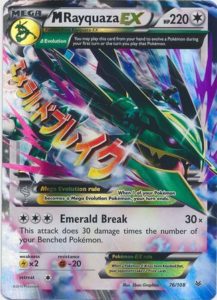

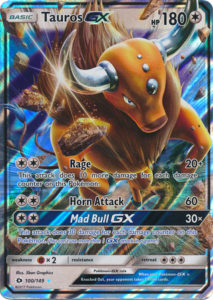
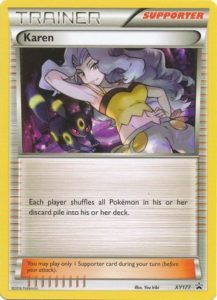
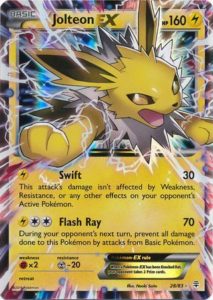
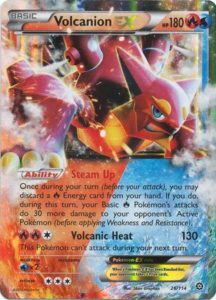
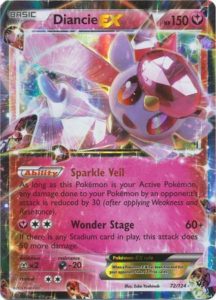

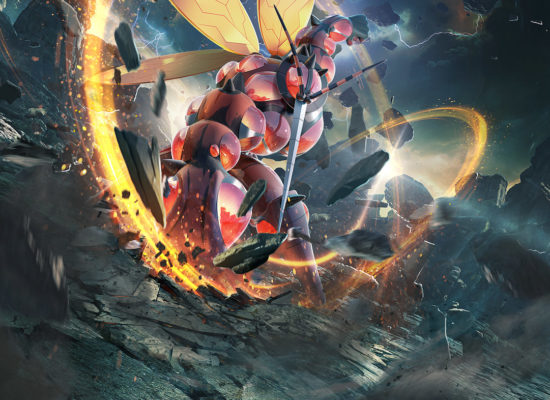


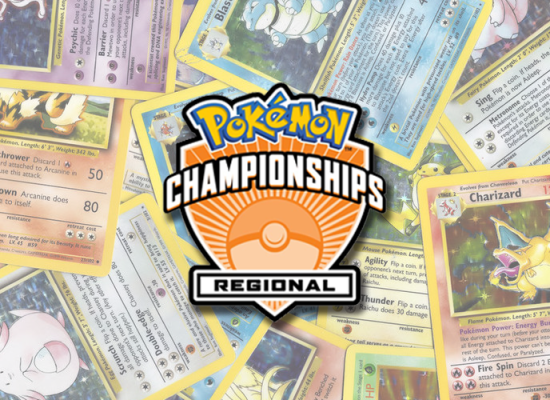




Leave a reply